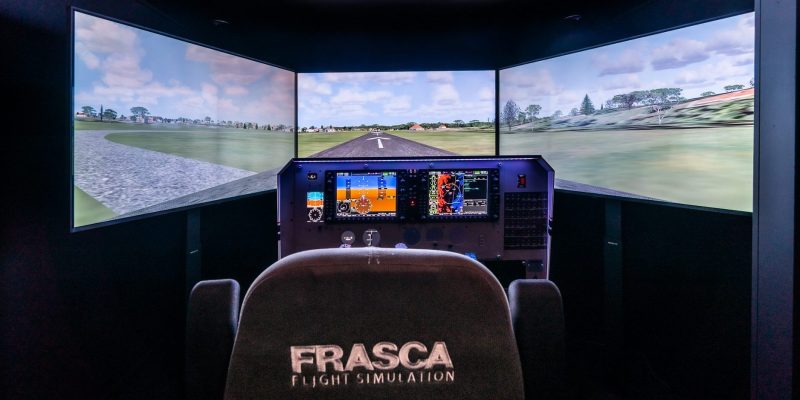Flexible, affordable payments plans now available.
A Command Instrument rating provides a pilot with flexibility to fly in weather conditions below visual meteorologic conditions. This course provides you with the skills to operate an aircraft under the Instrument Flight Rules and manage all systems aboard the aircraft.
A command instrument rating can be done in a single or multi engine aircraft and will give you access to almost all IFR departure, en-route and approach procedures.
For a private pilot this allows you to conduct your planned flights more often and offer more flexibility, reducing time spent on the ground waiting for the weather to clear.
If you only plan on doing private operations, a private instrument rating may be another option.
For a commercial pilot, a command instrument rating is an essential step in your professional career. The multi-engine command instrument rating (MECIR) is generally a requirement for commercial charter operations as well as the first step after a CPL on the way to an airline career.
To commence training for a command instrument rating, you must hold at least a Private Pilot Licence (PPL) and have 50 hours of command cross-country/navigation time.
The course structure for a command instrument can vary depending on qualifications held and level of experience. The typical structure is:
Phase 1: Simulator Sessions

The first phase involves getting familiar with the various systems and how to fly IFR procedures such as holds, approaches, SID’s and STAR’s.
The use of the simulator helps to reduce the cost to you, and allows for the various factors that impact IFR operations to be seen.
Phase 1B: Multi-Engine Class Rating
This phase applies to students who are looking for a multi-engine command instrument rating and don’t already hold a multi-engine class rating. This phase is conducted in VFR and involves familiarisation with the operation of a multi-engine aircraft in both normal operations and abnormal operations, including single-engine/asymmetric operations.
Phase 2: Aircraft sessions
After completing the simulator sessions (and where applicable, the multi familiarisation) you will now fly an aircraft under the IFR. This phase involves correctly filing flight plans, managing radios, managing systems and conducting the IFR flight and various operations.
Phase 2B: NVFR Component
This phase applies for those who don’t meet the night hour requirements, it involves night VFR navigations and night circuits including night solo circuits.
Phase 3: Consolidation/Pre-Licence
This phase consolidates your flying skills and works towards preparing you for the command instrument rating flight test. At the end of this phase you will sit the instrument rating flight test with a flight examiner. This test involves both a ground theory and practical flight component.
You will have needed to complete the IREX theory exam before the flight test.
As mentioned above, you require 50 hours command cross-country/navigation time to be issued an instrument rating. You will also need 40 hours of instrument time.
A command instrument rating at a minimum contains 20 hours of simulator and 20 hours of flight time. However, if you require the multi-engine class rating and/or the Night VFR experience, these hours would be increased.
The cost varies for a command instrument rating depending on your level of experience/qualifications. A command instrument rating can start from $19,500*. See table below for more information.
As mentioned above, almost every pilot requires more training than the legal minimum. We quote our costs based on the average hours to give you a more realistic price estimate.
| Component | Cost |
|---|---|
| Command Instrument Rating – Single Engine | $19,500 |
| This pricing is for those who only want to fly single-engine aircraft under the IFR. This pricing assumes you meet the night requirements for the grant of a CIR. If you do not meet the night requirements, add the NVFR component cost to this price. | |
| Multi-Engine Command Instrument Rating (flying split between Single and Multi Engine aircraft) | $22,000 |
| This pricing is for those who want to fly IFR in both multi and single engine. This path involves using a single engine aircraft for some of the flight lessons. This pricing assumes you meet the night requirements for the grant of a CIR and that you already hold a MEA class rating. If you do not meet the night requirements and/or hold a MEA, add the NVFR and/or MEA component cost to this price. | |
| Multi Engine Command Instrument Rating (all flying conducted in a Multi Engine aircraft) | $23,500 |
| This pricing is for those who want to fly IFR in both multi and single engine. This path involves using the multi engine aircraft for all of the flight lessons. This pricing assumes you meet the night requirements for the grant of a CIR and that you already hold a MEA class rating. If you do not meet the night requirements and/or hold a MEA, add the NVFR and/or MEA component cost to this price. | |
| NVFR Component | $1900 |
| Add this price to the CIR prices if you do not meet the night hour requirements (5 hours night, of which at least 1 hour must be solo) or do not hold a NVFR. | |
| MEA Class Rating Component | $6000 |
| Add this price to the MECIR prices if you do not hold a MEA class rating. This covers the general handling VFR components required for the issue of a MEA class rating. | |
Examples:
*note all pricings are based on average hours. Training above average hours will incur additional costs. Pricing is also based on being a member of the Central Coast Aero Club, non-members pay an additional $20/hr. Pricing current as of 5th January 2025.